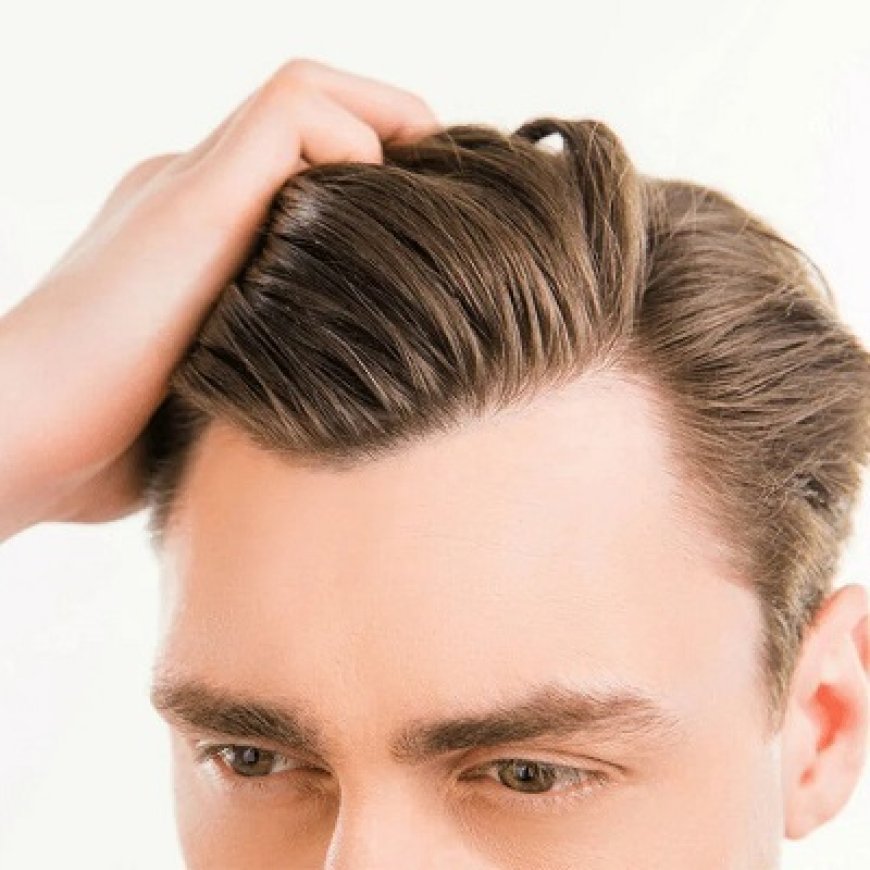How Many Hairs Does 1 Graft Have?
Restore natural hair with a transplant. Learn about grafts, hair density, and how many hairs each graft contains for fuller, lasting results.

A hair transplant in Islamabad is a highly effective solution for individuals dealing with hair loss, restoring natural-looking hair by transplanting healthy follicles from one part of the scalp to another. The term "graft" is frequently used in discussions about hair transplants, but many people may not understand what it means or how many hairs each graft contains. Knowing how grafts work, and understanding how many hairs are typically found in one graft, can help patients better understand the procedure and its results.
What Is a Hair Graft?
A hair graft is a section of tissue that contains hair follicles. During a hair transplant, grafts are harvested from areas of the scalp that are resistant to hair loss, such as the back or sides of the head. These grafts are then implanted into areas where hair is thinning or balding. The goal is to restore a fuller, more natural-looking hairline using the patient's own hair.
Hair grafts come in various sizes and shapes depending on the method of extraction and the individual’s natural hair growth patterns. The two most common techniques for extracting grafts are Follicular Unit Transplantation (FUT) and Follicular Unit Extraction (FUE). Both methods involve the removal of follicular units, but they differ in how the units are harvested from the scalp.
How Many Hairs Does 1 Graft Contain?
The number of hairs in each graft can vary depending on the individual, their hair type, and how their follicles naturally grow. A follicular unit typically contains between 1 and 4 hair strands. Here’s a breakdown:
-
Single-Hair Grafts: These grafts contain only one hair follicle. They are commonly used in areas where precise, fine work is required, such as along the hairline or in areas where thinning is minimal.
-
Two-Hair Grafts: These grafts contain two hair follicles and are often used to add volume behind the hairline, creating a natural look as the hair transitions from fine to thicker.
-
Three-Hair Grafts: These are the most common type of graft used in hair transplants and contain three hair follicles. They are typically placed in the middle of the scalp to provide density and coverage.
-
Four-Hair Grafts: These grafts contain four hair follicles and are generally used in areas where more density is required, such as the crown of the scalp.
Most people have a natural variation of 1, 2, 3, and 4-hair grafts spread across their scalp. The distribution of these follicular units is largely determined by genetics, and it is the surgeon's job to strategically place the different types of grafts to create a balanced, natural-looking result.
The Importance of Hair Density and Graft Selection:
One of the main factors affecting the outcome of a hair transplant is hair density, or the number of hairs per square centimeter on the scalp. When planning a hair transplant, the surgeon will evaluate the donor area to determine the number of viable grafts available and the density of hair follicles in that area. This evaluation helps determine how many grafts are needed for the procedure.
For instance, a person with thick hair may need fewer grafts to achieve a fuller look compared to someone with finer hair. Similarly, individuals with a higher percentage of 3 and 4-hair grafts in their donor area will require fewer grafts to cover the same area than someone with mostly single or two-hair grafts.
How Many Grafts Are Needed for a Hair Transplant?
The number of grafts required for a hair transplant depends on several factors, including the extent of hair loss, the thickness of the donor hair, and the area to be treated. Here’s a general estimate of how many grafts might be needed for various levels of hair loss:
- Minor Thinning or Receding Hairline: For individuals with mild hair loss, such as a slightly receding hairline or minor thinning at the crown, around 500 to 1,500 grafts may be sufficient.
- Moderate Hair Loss: For more significant thinning or balding at the front or crown, approximately 1,500 to 2,500 grafts may be necessary.
- Advanced Hair Loss: Individuals with extensive hair loss across the top of the scalp or with large bald patches may require 2,500 to 4,000 or more grafts to achieve the desired results.
The number of grafts that can be transplanted in a single session will depend on factors such as the donor area’s availability, the patient’s healing ability, and the type of transplant being performed (FUE or FUT). During your consultation, your surgeon will give you a clearer estimate of how many grafts will be needed to meet your goals.
Why the Number of Hairs Per Graft Matters:
The number of hairs per graft plays a key role in the overall outcome of a hair transplant. Surgeons use single-hair grafts to create a natural and refined hairline, while multi-hair grafts are placed further back to provide fullness and density. This technique allows for a more natural look, with fine, soft hair at the front and denser, thicker hair behind it.
For this reason, the number of hairs in each graft and their placement are vital to achieving the best possible outcome. A skilled surgeon will assess your scalp and choose the appropriate type and number of grafts based on your specific needs.
Conclusion: Understanding Grafts for Optimal Results:
Each hair graft contains between 1 and 4 hair follicles, and this variation is essential for creating a natural and aesthetically pleasing result. The number of hairs in each graft, combined with strategic placement, helps to restore a natural-looking hairline and fuller coverage. Whether you’re dealing with mild thinning or significant hair loss, understanding how grafts work can give you a better understanding of what to expect from a hair transplant and help guide your decision-making process. A consultation with an experienced surgeon will determine the best approach for your unique hair restoration needs.
For more information visit Dynamic Clinic PK
What's Your Reaction?

























